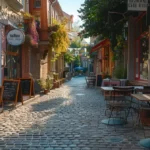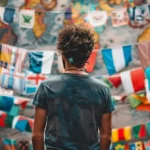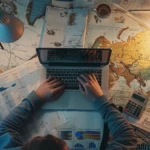Table Of Contents:
- Enhancing Language Skills Through Nomadic Living Experiences
- Key Takeaways
- Understanding How Nomadic Living Enhances Language Skills
- Experiencing Language Immersion Daily
- Comparing Traditional Learning to Real-World Practice
- Immersing in Local Cultures for Accelerated Language Acquisition
- Participating in Community Activities
- Adapting to Cultural Norms and Expressions
- Overcoming Language Barriers Through Nomadic Experiences
- Navigating Communicative Challenges Abroad
- Developing Problem-Solving Skills in New Languages
- Building Confidence in Speaking New Languages While Traveling
- Engaging in Conversations With Native Speakers
- Learning From Mistakes and Embracing Growth
- Strategies for Effective Language Learning on the Move
- Setting Achievable Language Goals
- Utilizing Local Resources and Language Tools
- Real-Life Success Stories of Language Proficiency Gained Nomadically
- Personal Accounts of Fluent Travelers
- Lessons Learned From Multilingual Nomads
- Conclusion
Enhancing Language Skills Through Nomadic Living Experiences
Have you ever struggled to learn a new language while stuck in a classroom or behind a desk? Nomadic living offers a unique solution to this challenge by immersing you in diverse cultures and everyday conversations. In this post, I will explore how living as a digital nomad enhances language skills through real-life experiences, overcoming barriers, and building confidence. You’ll discover practical strategies to learn on the move and hear inspiring success stories from fellow travelers. If language fluency is your goal, these insights will help you thrive in your journey, turning travel into an effective learning experience.
Key Takeaways
- Daily interactions with locals significantly boost language skills and vocabulary retention
- Real-world experiences foster fluency beyond traditional classroom learning methods
- Setting specific language goals enhances focus and progress in learning
- Cultural immersion deepens understanding of local expressions and social norms
- Embracing mistakes during conversations builds confidence and accelerates language acquisition
Understanding How Nomadic Living Enhances Language Skills

Navigating the world through nomadic living allows for daily language immersion, significantly boosting my linguistic abilities. I find that this hands-on experience offers more than traditional schooling can provide, as I practice my language skills in real-world scenarios. In the following sections, I’ll explore the impact of daily interactions within diverse cultures and how these experiences serve as a unique trail of personal growth and understanding.
Experiencing Language Immersion Daily
Living a nomadic lifestyle allows me to immerse myself in language learning daily, enhancing my ability to communicate in a second language. I find myself regularly engaging with locals, whether I’m ordering coffee, asking for directions, or participating in cultural events. In these interactions, every new photograph I take often includes a conversation that reinforces my vocabulary, like using flashcards to remember specific phrases I learned while speaking with Arabs in their communities.
Comparing Traditional Learning to Real-World Practice
When I compare traditional language learning to the real-world practice experienced through nomadic living, the differences are stark, particularly regarding fluency development. Traditional methods often focus on vocabulary lists and grammar rules, but they lack the immediacy and context found in everyday conversations in a foreign village. Through my travels, I’ve learned that the digital resources available for language acquisition are effective; however, the true skill of speaking emerges only when I engage directly with locals, allowing for authentic interactions that reinforce my learning.
- Daily interactions with locals enhance my vocabulary.
- Real-life scenarios provide practical language skills.
- Engagement in cultural events helps me understand slang and expressions.
As I traveled, the streets transformed into my classroom. Each conversation and meal uncovered a new way to understand the world around me, showing me the power of immersing in local cultures.
Immersing in Local Cultures for Accelerated Language Acquisition
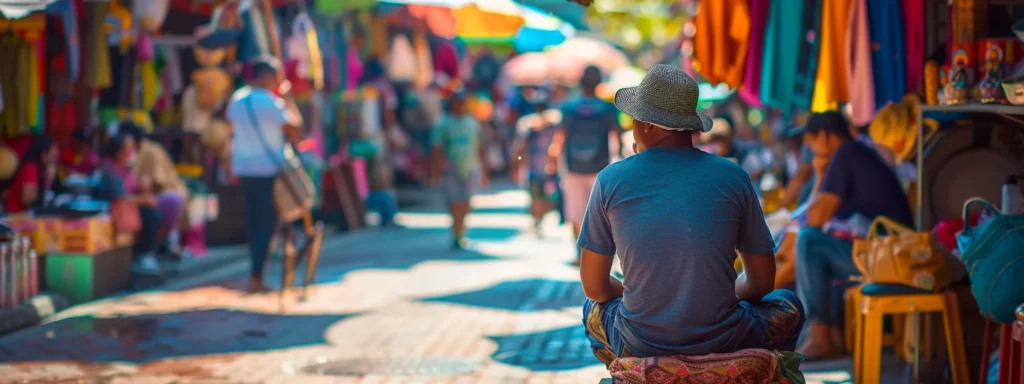
Participating in community activities offers a practical approach to language acquisition. Through coworking and engaging with locals, I enhance my understanding of regional dialects and cultural nuances. Adapting to expressions and cultural norms fosters a sense of curiosity that drives my learning. This groundwork sets the stage for exploring how these experiences shape my language skills and understanding.
By examining the logic behind communication styles and the influence of shared experiences, I gain deeper insights into the mother tongue of each culture. The relationship between language and culture becomes clearer, enriching my journey through immersive learning.
Participating in Community Activities
Participating in community activities significantly enhances my understanding of a foreign language and its cultural context. When I engage with local events, such as festivals or health camps where I volunteer as a physician, I not only practice vocabulary but also gain insights into local expressions and literacy nuances. This hands-on experience demands my attention, drawing me into conversations that reveal the reasons behind specific phrases and dialects, ultimately enriching my language skills in a way that traditional learning cannot achieve.
Adapting to Cultural Norms and Expressions
Adapting to cultural norms and expressions has been an integral part of my language learning journey while living nomadically. I’ve noticed that navigating conversations with locals often requires more than textbookknowledge; it demands a mindfulness of cultural nuances. For example, while volunteering in a medical outreach program in a rainforest community, I quickly learned the local expressions that reflect their unique healthcare practices and values, which deepened my understanding of both the language and the culture.
Engaging with locals sharpens your tongue and opens doors to new worlds. Yet, for every language learned, there are barriers to break; it is in the nomadic life that we find the tools to conquer them.
Overcoming Language Barriers Through Nomadic Experiences
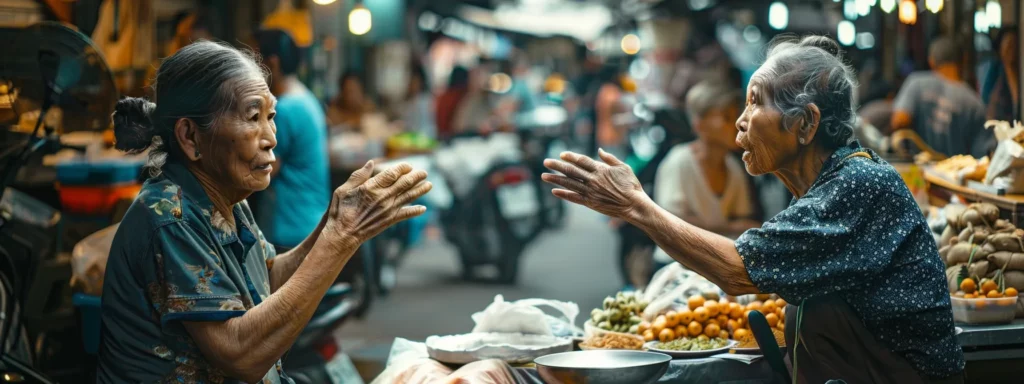
In navigating communicative challenges abroad, I often encounter situations that test my language immersion skills, particularly during my travels in Southeast Asia. Developing problem-solving skills in new languages has become essential for overcoming these barriers. In the following sections, I will cover practical strategies I’ve employed to facilitate language learning and enhance my understanding of different cultures through everyday interactions.
Navigating Communicative Challenges Abroad
During my travels as a nomad, I’ve frequently faced communicative challenges that require quick thinking and adaptability. Whether practicing photography with locals or simply asking for assistance, I’ve learned the importance of being patient and maintaining a positive energy, which greatly helps to defuse potential misunderstandings. This concept of patience is invaluable, as it enables me to clarify questions and engage more effectively, ultimately enhancing my language skills as I navigate through diverse cultures.
- Face communicative challenges while traveling.
- Practice photography and engage with locals.
- Maintain patience to clarify questions.
- Enhance language skills through real-life interactions.
Developing Problem-Solving Skills in New Languages
While living nomadically in South America, I’ve developed problem-solving skills that significantly enhance my language acquisition. Internet access empowered me to research local customs and language nuances ahead of time, allowing me to prepare for interactions that might surround sensitive topics like LGBTQ+ rights or local policies. For example, during a community event, I was able to engage in discussions around policy changes affecting the LGBT community, using targeted phrases I had practiced, demonstrating how adaptability and preparation can improve communication in diverse cultural environments:
Every conversation unfolds like a new adventure, teaching lessons that textbooks cannot. Gaining confidence in speaking comes from the courage to try, even amid the noise of foreign words.
Building Confidence in Speaking New Languages While Traveling
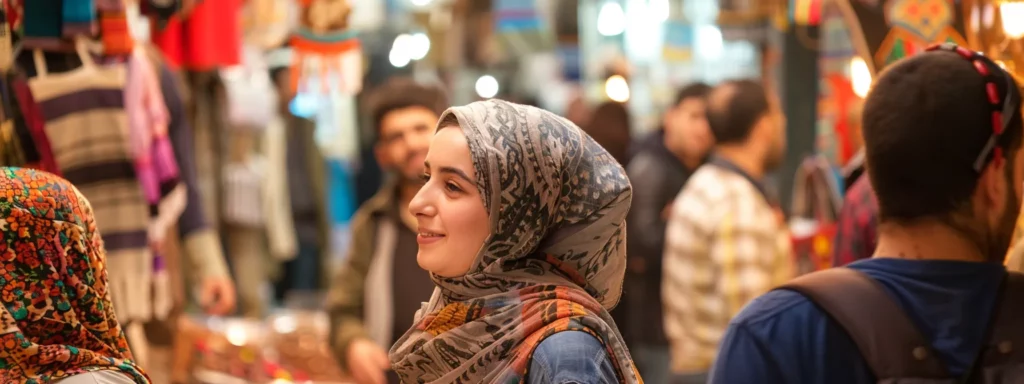
Engaging in conversations with native speakers has been crucial for building my speaking confidence, especially in countries across the Middle East. Each interaction enhances my vocabulary and allows me to learn from mistakes, fostering growth in my language skills. I’ll explore how these experiences contribute to personal productivity and the straightforward handling of cultural nuances, such as understanding local tax phrases, making each exchange significantly impactful.
Engaging in Conversations With Native Speakers
Engaging in conversations with native speakers has been a transformative aspect of my journey, particularly when interacting with various tribes during my travels. I vividly remember one instance in a bustling market where I practiced my Mandarin Chinese with a local vendor, which not only helped me refine my pronunciation but also allowed me to connect on a deeper level. Utilizing social media to find local language exchange groups has also enhanced my learning experience, facilitating discussions that blend cultural nuances with practical employment terminology commonly used in the area, ultimately building my confidence in speaking new languages while traveling.
Learning From Mistakes and Embracing Growth
During my travels, I’ve learned that mistakes are an integral part of mastering a new language. I vividly recall a moment at a concert where I mispronounced a word while trying to ask someone for their email address, leading to laughter and a friendly correction. This experience not only highlighted the importance of practice but also opened conversations about literature and minimalism, reinforcing my understanding that growth often stems from discomfort and errors.
- Recognizing my mistakes as learning opportunities.
- Engaging with locals enhances my confidence.
- Using challenges to deepen my language skills.
- Finding support through shared experiences.
Speaking a new language opens doors to new experiences. Now, let’s explore practical strategies that will help you learn effectively while you’re on the move.
Strategies for Effective Language Learning on the Move

Setting achievable language goals is vital for effective learning while traveling. I focus on specific milestones, such as mastering grammar principles or enhancing my understanding of the French language during my stays in Latin America. Utilizing local resources and language tools allows me to immerse myself in the culture, transforming my feeling of uncertainty into confidence as I practice daily.
In the following sections, I’ll provide practical strategies for defining those language goals and leveraging available resources to facilitate real-world learning experiences.
Setting Achievable Language Goals
Setting achievable language goals has been instrumental in my journey of enhancing language skills through nomadic living. For instance, while traveling in Latin America, I prioritized specific milestones, such as mastering 50 essential phrases or conversing with locals about the cost of living in their towns. By utilizing practical resources like subtitles on films and implementing techniques recommended by Tim Ferriss, I cultivated a deeper knowledge of the language, allowing me to engage more confidently in conversations and enriching my overall travel experience.
Utilizing Local Resources and Language Tools
Utilizing local resources and language tools has been pivotal in my journey of enhancing language skills through nomadic living. For instance, I often connect with the “Explore Traveler” community, where I can access real-time insights and conversations about local dialects. By mining information from local newspapers or community boards, I conduct research that not only augments my vocabulary but also helps me understand the cultural context, which is essential for meaningful conversations—an investment of time that ultimately enriches both my travels and my income-earning potential as a language coach.
Language learning is like walking through a new landscape, each word a stepping stone. In the next part, you’ll see how real people found themselves thriving in foreign tongues while embracing the nomadic life.
Real-Life Success Stories of Language Proficiency Gained Nomadically

In this section, I’ll share personal accounts of fluent travelers who have successfully harnessed their nomadic experiences to achieve language proficiency. I’ll also highlight lessons learned from multilingual nomads who faced and overcame challenges. By exploring these real-life success stories, you’ll gain valuable insights into practical strategies that can enhance your own language skills through immersive travel.
Personal Accounts of Fluent Travelers
Throughout my travels, I have encountered numerous fluent travelers who have effectively harnessed their nomadic experiences to achieve language proficiency. For example, I met a fellow expat who became fluent in Spanish after living in various Latin American countries for two years. By immersing themselves in local culture and consistently interacting with native speakers, they built a solid foundation in the language, demonstrating that real-world practice is often more effective than traditional classroom settings.
Lessons Learned From Multilingual Nomads
From my interactions with multilingual nomads, I have learned that setting clear language goals is essential for effective learning. Engaging in cultural contexts, such as participating in local activities, boosts language retention and comprehension. Additionally, I’ve seen how maintaining a mindset open to learning from mistakes can turn challenges into valuable lessons, ultimately reinforcing confidence during conversations.
Conclusion
Enhancing language skills through nomadic living experiences proves to be an invaluable approach for learners. Engaging with locals in real-world scenarios fosters not only vocabulary development but also cultural understanding, which enriches communication. Setting achievable goals and utilizing local resources empower travelers to immerse themselves more fully in their target languages. Ultimately, embracing these experiences can lead to profound personal growth and increased confidence in language proficiency.

